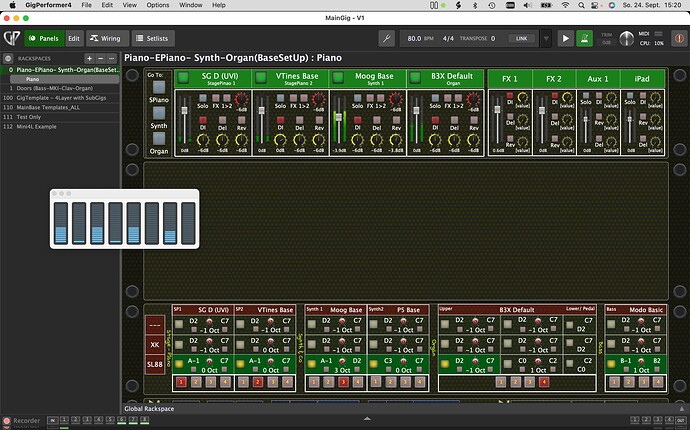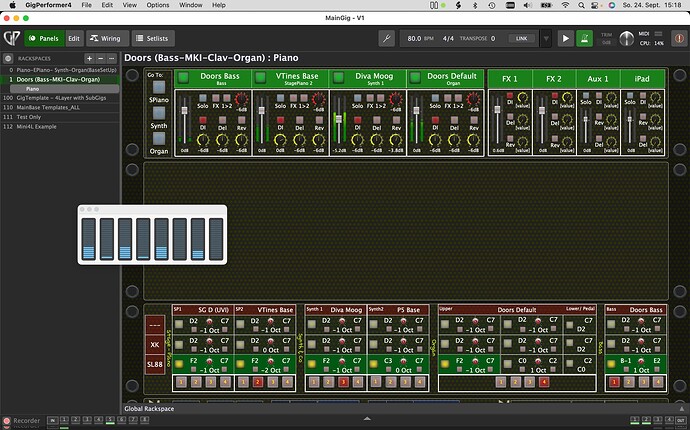For live setups, I’ve found one instance to be enough. I’m only doing so much at a time, compared to a large studio mix.
I’m wondering if it might be possible for GS to use a separate core for the global vs. local rackspace. That’s the one division in GS that might be similar to DAW channels.
I understand that different GP instances use different cores, so in a large setup, one could have an instance with the setlist, audio player, and MIDI Player. You would then want a system with good, virtual MIDI and Audio routing. A large RME interface with TotalMix software could work well. Macs have built-in virtual MIDI.
Next, you could have an instance for MIDI drums and another for MIDI bass, if you do backing sessions that way. Add dedicated instances for MIDI keyboard libraries, guitar sims, etc.
Finally, you could have a mixing instance, including front-of-house and monitors.
Frankly, this could be very cool for one-man-bands where you want your own signature sound, given that you might have only a few drum and bass sounds, etc. The Main instance would just call up whatever you need for each song.
Currentlhy, I make a new Rackspace for each song, but this can be a lot of work if I get a new drum library and want to update everything. On the other hand, with a “drum instance”, I could just update a small number of rackspaces for drums, and I’d be good to go.
Maybe someday, I’ll upgrade to a bigger interface and try it out. For now, I have everything working from one instance on an M1 MBP, so I’ll avoid complicating my life.
I could envision a future “Gig Performer Ultimate” product (at a higher price) that would have another level added, including routing audio and MIDI between multiple internal, instances. You could then connect your Controller to many separate instruments, and then to the FOH and MON mixers. In other words, you would have many Local “Wiring/Panel” boxes that could.be interconnected and select their Rackspaces and Variations separately - each on a different core. You could run a whole band on one laptop. I’d pay step-up pricing for that. 


